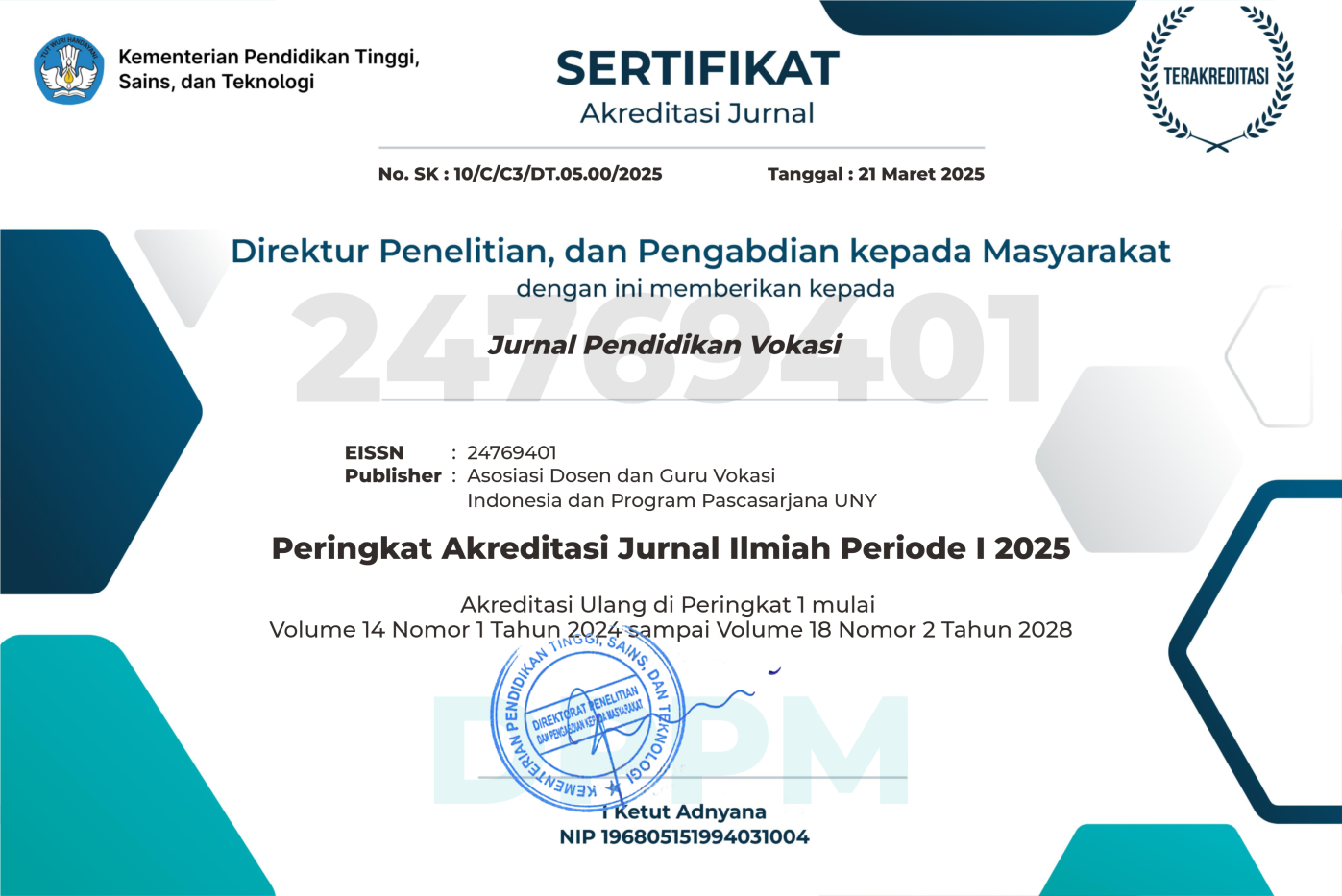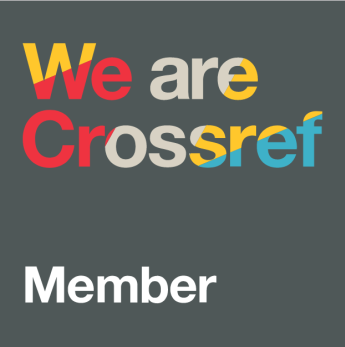Partnership model of vocational education with the business sector in civil engineering expertise program of Vocational Secondary Schools
DOI:
https://doi.org/10.21831/jpv.v7i3.9383Keywords:
partnership model, vocational education, business sector, civil engineering expertiseAbstract
This study aims to: (1) develop a partnership model of vocational education with business sectors in civil engineering expertise program of vocational secondary schools in Bali and (2)testing the effectiveness and efficiency of partnership model developed. The study used the design and development model of Richey & Klein (2009), which consists of three main phases, namely the phase of model development, model validation, and model testing. The phase of model development used the qualitative approach, through literature review, observation and interview. Expert review techniques were used in the model validation phase. The model testing used pre-experimental design with one-shot case study. The study found that the partnership model of vocational education with the business sector in civil engineering expertise program of vocational secondary schools in Bali involves several components, such as key stakeholders, the underlying principle of partnership, orientation/common goal, the management of educational resources (teachers and facilities), curriculum development, implementation of learning/training and work practices, competency test of graduates, distribution of learning outcomes/output, as well as monitoring, evaluation and feedback of partnership program. Experimental results show that the partnership model developed has met all of the criteria (effective, practical and efficient).
References
Buckup, S. (2012). Building succesful partnership: a production theory of global multi-stakeholder perspective. Statewide Agricultural Land Use Baseline 2015. https://doi.org/10.1017/CBO978110741 5324.004
Cassidy, T. (2007). The Global Education Initiative ( GEI ) model of effective partnership initiatives for education. Geneva: World Economic Forum. https://doi.org/201207
Djojonegoro, W. (1998). Pengembangan sumber daya manusia melalui Sekolah Menengah Kejuruan (SMK). Jakarta: Jayakarta Agung Offset.
Draxler, A. (2008). New partnerships for EFA : building on experience. Paris: United Nations Educational, Scientific and Cultural Organization-International Institute for Educational Planning (UNESCO-IIEP) and World Economic Forum.
Frank, F., & Smith, A. (2000). The partnership handbook. Quebec: Minister of Public Works and Government Services Canada.
Gajda, R. (2004). Utilizing collaboration theory to evaluate strategic alliances. American Journal of Evaluation, 25(1), 65–77. https://doi.org/10.1016/j.ameval.2003.11.002
Gall, M. D., Gall, J. P., & Borg, W. R. (2003). Educational research, an introduction. Boston: Pearson Education, Inc.
Hamid, M. A., Aribowo, D., & Desmira. (2017). Development of learning modules of basic electronics-based problem solving in Vocational Secondary School. Jurnal Pendidikan Vokasi, 7(2), 149–157. https://doi.org/10.21831/jpv.v7i2.12986
Hands, C. (2005). It's who you know "and" what you know: the process of creating partnerships between schools and communities. School Community Journal, 15(2), 63–84.
Horton, D., Prain, G., & Thiele, G. (2009). Perspectives on partnership: A literature review. International Potato Centre Working Paper.
Lannert, J., Munbodh, S., & Verma, M. C. (1999). Getting the stakeholders involved. Paris: International Institute for Educational Planning.
Marriott, N., & Goyder, H. (2009). Manual for monitoring and evaluating education partnerships. Paris: International Institute for Educational Planning.
Miles, M. B., & Huberman, A. M. (1994). Qualitative data analysis: an expanded source book. Thousand Oaks: Sage Publications, Inc.
Piyasiri, T. A., Suraweera, & Edirisooriya. (2008). Identify benefits and analyze issues related to partnership programs between public TVET institutions and private sector enterprises the research on identify benefits and analyse issues related to partnership programs between public TVET institutions and. Sri Lanka: National Education Commisision.
Prosser, C. A., & Quigley, T. H. (1950). Vocational education in a democracy. Chicago: American Technical Society.
Richey, R. C., & Klein, J. D. (2009). Design and development research. New York: Routledge.
Stenstrom, M.-L., & Tynjala, P. (2009). Introduction. In Towards integration of work and learning, Strategies for connectivity and transformation (pp. 1– 10). Jyvaskyla: Springer.
The United States Agency for International Development. (2008). Skills gap and training needs analysis of the construction sector and related supporting services in AQABA, the aqaba community and economic development (ACED) program.
Torjman, S. (1998). Partnerships : the good, the bad and the uncertain.
Torres, G. W., & Margolin, F. S. (2003). The collaboration primer: proven strategies, considerations, and tools to get you started. Chicago: Health Research and Educationl Trust.
TVET Colleges Technical Task Team. (2014). Forging TVET college partnerships – implications for the post-school education and training system. Pretoria: Human Resource Development Council for South Africa.
Tynjala, P. (2009). Connectivity and transformation in work-related learning, Theoretical foundations. In Towards integration of work and learning (pp. 11–38). Jyvaskyla: Springer.
UNESCO. (2013). School-to-work review transition information bases (2nd Editio). Paris: United Nations Educational, Scientific and Cultural Organization.
Downloads
Published
How to Cite
Issue
Section
Citation Check
License
The authors submitting a manuscript to this journal agree that, if accepted for publication, copyright publishing of the submission shall be assigned to Jurnal Pendidikan Vokasi. However, even though the journal asks for a copyright transfer, the authors retain (or are granted back) significant scholarly rights.
The copyright transfer agreement form can be downloaded here: [JPV Copyright Transfer Agreement Form]
The copyright form should be signed originally and sent to the Editorial Office through email to jpvokasi@uny.ac.id
Jurnal Pendidikan Vokasi by http://journal.uny.ac.id/index.php/jpv is licensed under a Creative Commons Attribution-ShareAlike 4.0 International License.












